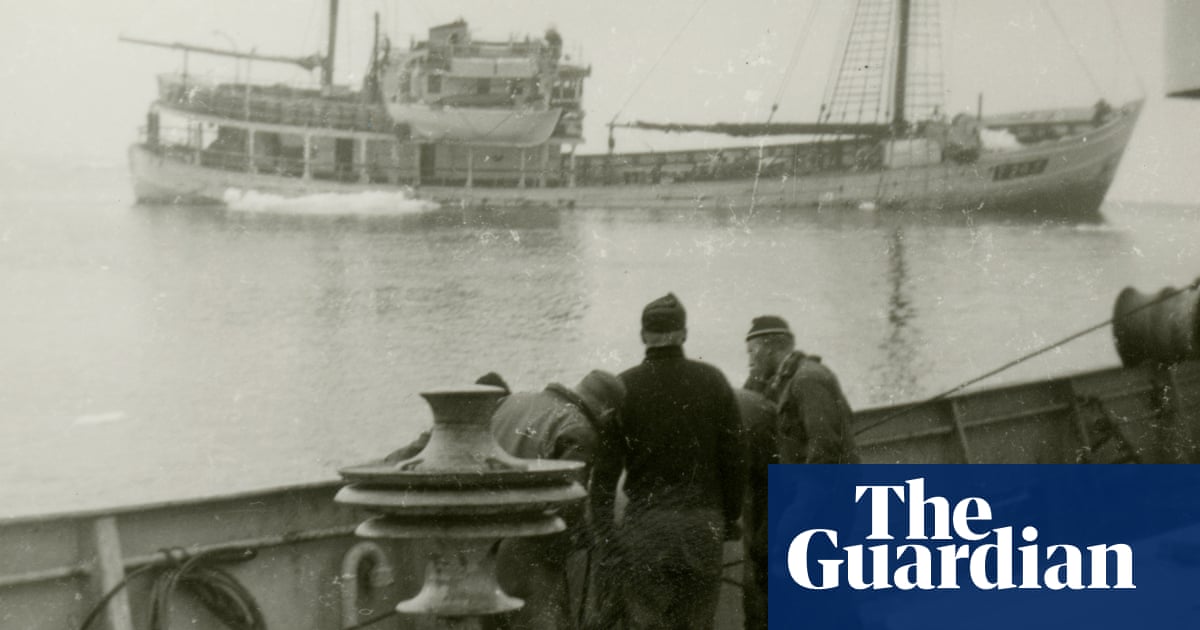The wreck of the ship on which renowned Antarctic explorer Sir Ernest Shackleton died has been found off the coast of Labrador, Canada, searchers have announced.
Locating the Quest – a schooner-rigged steamship which sank on a 1962 seal hunting voyage – represents a last link to the “heroic age of Antarctic exploration”, said search leader John Geiger.
“Finding Quest is one of the final chapters in the extraordinary story of Sir Ernest Shackleton,” said Geiger, who heads the Royal Canadian Geographical Society.
Geiger was speaking from the bridge of Leeway Odyssey as the oceanographic research vessel returned to port in St John’s, Newfoundland, after locating the Quest in 400 metres of water 15 nautical miles from shore.
Quest’s final resting place was 7,500 miles (12,000km) from where it was anchored when Shackleton died of a heart attack onboard in the harbour at Grytviken, South Georgia, on 5 January 1922.
The explorer was just 47 and was returning to Antarctica seven years after his previous ill-fated expedition had ended in near catastrophe.
Coming three years after the expeditions of the Norwegian Roald Amundsen and the Englishman Robert Falcon Scott first reached the south pole just weeks apart, in 1914 Shackleton hoped to make the first land crossing of the Antarctic continent. Instead, his doomed expedition became one of the most gruelling – and miraculous – survival ordeals of all time.
The mission went awry when his ship, the Endurance, became trapped in pack ice in the Weddell Sea, forcing Shackleton and his men to camp on unstable ice floes. After months adrift, the Endurance sank and Shackleton sailed with his crew in lifeboats to the desolate and uninhabited Elephant Island.
Realising their chances of rescue remained slim, Shackleton took five of his men in an open boat on an 800-mile odyssey across perilous oceans to reach the whaling station at Grytviken on South Georgia. Four months later, Shackleton succeeded in rescuing his crew from Elephant Island.
All 27 members of Shackleton’s crew survived the ordeal, establishing their leader as a lion of the heroic age of Antarctic exploration, with his care for his men distinguishing Shackleton in an era when polar explorers often died in the extreme conditions due to rudimentary equipment and insufficient supplies.
In a further testament to Shackleton’s leadership, eight of the Endurance crew would return with him on his next expedition. This despite the Quest being smaller than the Endurance with a design apparently ill-suited for polar expedition. A wooden-hulled former sealer built in Norway in 1917, the Quest was “small, poorly fitted and reckoned exceedingly uncomfortable by those who sailed in her”, according to an exhibition on the ship at the South Georgia Museum.
But journalists at the time marvelled at its modern gadgetry, which included wireless radio equipment, electric lights, an electrically heated crow’s nest, an instrument for plotting a ship’s course called an odograph, and even an Avro Baby seaplane.
After Shackleton’s death, Frank Wild took command and the Quest continued towards the Weddell Sea but the underpowered ship struggled in icy conditions and its men returned despondent to the UK months later.
The journey marked the end of the so-called heroic age, which was followed by a new “mechanical age” which relied less on the derring-do of its leaders and more on technological advances including tracked motor vehicles and aircraft.
But the Quest continued sailing for decades in various capacities. When Norwegian polar explorer Amundsen disappeared while flying on a rescue mission over the Arctic in 1928, the Quest was sent to help in the unsuccessful search for his remains.
British explorer Gino Watkins then used the Quest on his 1930 British Arctic air route expedition, which sought to survey an air route from the UK to Winnipeg.
During the second world war the Quest served as a minesweeper in the Caribbean.
After the war, the ageing vessel returned to her original purpose and it was while hunting seals in the Labrador Sea that the Quest struck ice and sank in May 1962, though all her crew were rescued.
This year marks 150 years since Shackleton’s birth in County Kildare and more than a century after his death, the Anglo-Irish explorer’s story continues to make headlines.
In 2022, the wreck of the Endurance was discovered 3,000 metres below the Weddell Sea, preserved by the freezing waters and absence of wood-eating organisms.
“After Endurance was found, a lot of Shackleton buffs all over the world … immediately turned to Quest,” said Geiger, asking “‘Where’s Quest? Can we find it?’”
“It was a bit of a detective story initially,” said search director David Mearns, a shipwreck hunter who was also involved in the decades-long project to find the Endurance. “I thought, personally, we had a shot, maybe a 70% chance of finding it.”
Five days into the search, the team’s sonar equipment detected the wreck lying on the seafloor. “The masts are knocked down and that’s what we would expect, but the whole basically is intact,” said Mearns. The team plans to return to photograph the wreck later this year.
The discovery has been welcomed by Shackleton’s closest living relative, Alexandra Shackleton, who noted that her grandfather had originally planned to use Quest on a Canadian Arctic expedition until the Canadian government of Arthur Meighen withdrew its support.
“It is perhaps fitting that the ship should have ended its storied service in Canadian waters,” she said.

